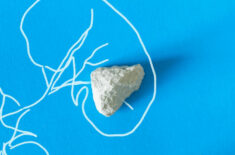Overview
Poison ivy, poison oak, and poison sumac are plants known to cause an itchy rash because they all release an oil called urushiol.
Urushiol is found in these plants’ leaves and stems and can cause an allergic reaction known as contact dermatitis, which is characterized by itchiness, redness, and even blisters.
Home remedies for poison ivy include:
- Essential oils (more on that below)
- Rubbing alcohol
- Baking soda bath
- Apple cider vinegar
- Calamine lotion
- Hydrocortisone cream
Essential Oils As A Natural Remedy
Essential oils (EOs) are highly concentrated plant extracts containing many medicinal properties that can speed up healing.
Aromatherapy, the therapeutic application of essential oils, is considered a form of alternative medicine.
Certain essential oils like tea tree oil and lavender oil are known to be antiseptics that possess pain-relieving (analgesic) properties and anti-inflammatory properties.
Research shows that EOs can help certain skin conditions like:
- Soothing eczema
- Psoriasis relief
- Shingles
- Treating warts
- Healing bug bites
- Helping sunburns and skin burns
- Skincare
- Anti-aging
- Acne
The Best Essential Oils for Poison Ivy
Lavender oil
Lavender essential oil is well-known to lower inflammation while reducing pain and discomfort.
It also helps speed up skin healing from wounds and rashes.
Peppermint oil
Peppermint essential oil is an effective anesthetic that provides a cooling, soothing sensation when applied topically.
Tea tree oil (melaleuca)
Tea tree is a potent antiseptic that helps prevent infections and speeds up skin healing.
This is especially good if you’re experiencing blisters and open sores from poison ivy.
Chamomile oil
Chamomile essential oil is hydrating and soothing to the skin and helps accelerate wound healing.
A 2011 controlled trial found that applying chamomile oil twice a day on itchy and inflamed skin is more effective than a once a day application of 1% hydrocortisone cream. (1)
Other EOs that might be helpful for poison ivy are:
- Eucalyptus essential oil
- Frankincense oil
- Myrrh oil
Safety Concerns
When used safely and mindfully, essential oils typically produce little to no adverse side effects.
Because some EOs are quite strong, however, they might irritate or worsen skin conditions like rashes and blisters.
Always dilute your essential oils in a carrier oil like coconut oil or jojoba oil if you’re applying directly to the skin, especially if you’re treating an open sore.
If your poison ivy, poison oak, or poison sumac symptoms are severe or painful, please consult with your healthcare provider before applying any essential oil to your wounds.
Some essential oils come with specific contraindications, so do your research beforehand as many oils aren’t suitable for babies, young children, pregnant or nursing women, or those with epilepsy and high blood pressure.
If your rash worsens or you experience any adverse reaction to any oil, then discontinue use immediately.
How To Use EOs As Poison Ivy Remedies
The most effective way to use EOs for poison ivy symptoms is to apply them directly to the skin.
As mentioned, always dilute your oils in a carrier oil like coconut oil.
Perform a patch test beforehand on a non-affected area and wait 24-48 hours to see if you react.
Diffusers aren’t a useful mode of application for poison ivy purposes.
You can either create a homemade topical solution and apply it twice daily to the affected area with a clean cotton swab or cotton ball.
You can also add a few drops of essential oils to ice-cold water and use a washcloth to make cold compresses.
You can also fill a spray bottle with the ice-cold water and oils and spray it on the affected area as needed.
A DIY Essential Oil Blend for Poison Ivy Relief
For best results, use this blend at least twice a day.
Stop using it immediately if you experience any adverse reactions.
- One teaspoon apple cider vinegar
- One teaspoon witch hazel
- One teaspoon aloe vera juice or gel
- One tablespoon fractionated coconut oil
- 2 drops peppermint oil
- 2 drops lavender oil
- 2 drops roman chamomile oil
- 2 drops tea tree oil
Mix all ingredients together in a dark glass or non-BPA bowl.
Apply the solution with a clean cotton swab as needed.
REFERENCES
:
(1) https://pubmed.ncbi.nlm.nih.gov/21617262/












